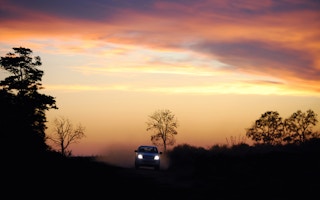The long, hot tropic nights – and they are measurably hotter than they used to be – could turn the Amazon into an emitter of carbon dioxide to the atmosphere, and tip the Congo basin from a carbon sink to a source of greenhouse gas.
It hasn’t happened yet, but climate scientists have been looking at the behaviour of plants through the whole daily tropic cycle, and found evidence for a nightmare scenario in which the hot, moist forests breathe out more carbon dioxide than they have absorbed during the daytime to “fix” into solid timber and foliage.
William Anderegg, a research ecologist at Princeton Environmental Institute, and colleagues report in the Proceedings of the National Academy of Sciencesthat they have been using climate simulations and measurements stretching back to 1959 to make sense of the variability over the years of carbon uptake in the forests.
Strongest link
They considered the effects of rainfall and drought, and changes in daily temperature. But they found that the strongest link with the increasing ups and downs of this uptake is the tropic night. As the nights warmed by 0.6°C since 1959, the trees began to release more of the carbon dioxide that they took up in the daytime.
The research paper puts the message with unusual directness. “Respiration-driven losses in forest carbon constitute one major scenario through which the terrestrial carbon sink could switch to a source,” the scientists write.
“Because tropical forests account for 33 per cent of the annual primary productivity of the terrestrial biosphere, and are currently a significant carbon sink … the carbon balance of tropical forests is of heightened concern.”
Implicit in the study is yet more evidence that global warming could deliver its own positive feedback. Hotter forests would release more carbon and make global warming even worse.
And since one cornerstone of global climate mitigation strategy is the conservation of the great forests, there is a deeper message: the way to contain global warming ultimately depends on a concerted, global attempt to drastically reduce greenhouse gas emissions.
Plant life is a balance of photosynthesis, which takes CO2 from the atmosphere, and returns oxygen, and photorespiration, in which plants absorb oxygen and exhale CO2.
Photosynthesis can happen only during the sunlight hours, but photorespiration happens by day and night. And global warming is not uniform: the high latitudes are warming faster than the tropics, and the tropic nights are warming faster than the days.
“When you heat up a system, biological processes tend to increase,” Dr Anderegg says. “At hotter temperatures, plant respiration rates go up, and this is what’s happening during hot nights. Plants lose a lot more carbon than they would during cooler nights,”
The world’s forests are in any case under mounting stress. Researchers have found them increasingly at risk from extremes of heat and drought, and their role as reservoirs of atmospheric carbon is threatened by greater risk of wildfire.
Changing conditions
Drought alone could turn the Amazon basin into a net emitter of carbon, according to one study, although other research suggests that the Amazon forest may be more resilient to higher temperatures.
And it is possible that, over the decades, the forests could subtly adapt to changing conditions.
But the explicit message of the latest study is that the long, sultry tropic nights may have begun to change the way the forests respond to carbon dioxide.
“Nighttime temperatures have been increasing faster than daytime temperatures and will continue to rise faster,” Dr Anderegg said.
“This suggests that tropical ecosystems might be more vulnerable to climate change than previously thought, risking crossing the threshold from a carbon sink to a carbon source.”

















